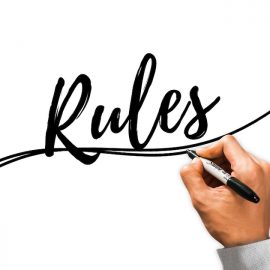

This article is an excerpt from the Shortform book guide to "Exploring the World of Lucid Dreaming" by Stephen LaBerge and Howard Rheingold. Shortform has the world's best summaries and analyses of books you should be reading.
Like this article? Sign up for a free trial here.
Want to know how to prepare for lucid dreaming? How can you improve your dream recall? What are dream clues?
Lucid dreaming is more than just having fun while you’re sleeping—there are real-life benefits to learning the practice. But before you can start lucid dreaming, there are steps you must take to prepare your mind.
Here’s how to prepare your mind for lucid dreaming.
Prepare for Lucid Dreaming
If you want to know how to prepare for lucid dreaming, you’ll first need to know some basic information about sleep. Then, you’ll work to develop your dream recall. When you can remember your dreams, you’ll familiarize yourself with them and identify patterns within them. The authors call these patterns dream signs (we’ll call them dream clues). Dream clues help you recognize when you’re dreaming—and this recognition is one of the keys to achieving lucidity.
(Shortform note: Research indicates that over the long term, meditation can also prepare your mind for lucid dreaming. For example, people who have at least five years of meditation experience and meditate at least 200 minutes per week have more lucid dreams than those without meditation experience. The relationship between frequent meditation and increased lucid dreaming may be due to the heightened self-awareness cultivated through meditation, which could enhance your ability to recognize the dream state during sleep.)
How Does Sleep Work?
The authors explain that during sleep, your brain and body go through two main phases: a restful state where your mind, breathing, and metabolic rate slow down as the body repairs itself, and an active state called Rapid Eye Movement (REM) sleep. In REM, your eyes move rapidly, your breathing is irregular, and your brain activity is similar to when you’re awake.
Both non-lucid and lucid dreams occur during REM sleep. Because your brain activity is similar during REM dream states and waking life, you experience similar physiological and psychological changes. For example, if you’re stressed or frightened in a dream, your heart will pound in real life.
(Shortform note: In Why We Sleep, Matthew Walker explains why, during REM sleep, your body doesn’t make large gestures even though your brain waves mimic being awake: It’s due to a biological phenomenon called muscle atonia in which your brain sends inhibitory signals to your spinal cord blocking nerve pathways leading to your muscles. It’s a protective measure—if you physically acted out your dreams, it could result in injury. So, while your mind may be active and dreaming, your body remains safely immobilized, other than small movements like faster breathing or increased heart rate.)
Develop Your Dream Recall
According to the authors, to lucid dream, you’ll first need to get to know your dreams and their typical patterns. They advise you to start by learning to recall your dreams after you’ve woken up, because if you can’t remember your normal dreams, you won’t remember your lucid dreams either. And having good dream recall will help with the crucial key to lucid dreaming—recognizing that your dream is a dream. If you can’t remember your dreams, you can’t become familiar with them, making it nearly impossible to recognize when you’re in one.
(Shortform note: The authors acknowledge that dream recall is easier for some than for others. Neuroscience research suggests three possible reasons why a person may have strong dream recall: 1) During REM sleep, they might have increased activity in the parts of their brains that process memory and emotion; 2) they tend to have more vivid or emotionally charged dreams, making them more memorable; 3) they might be more likely to wake up briefly during REM sleep, allowing them to encode the dream into memory before falling back asleep.)
Aim to remember at least one dream every night. If you can’t remember your dreams at all, the authors suggest you try two things:
- Set the intention to remember your dreams before you fall asleep. Intending to remember your dreams is often enough to help you recall them.
- Wake yourself up during REM cycles. People tend only to remember their dreams when they wake up during a REM cycle, and REM cycles happen at 90-minute intervals. The authors recommend that you set an alarm to go off during later cycles: at four and a half, six, or seven and a half hours after your bedtime.
(Shortform note: In addition to setting the intention to remember your dreams and waking yourself up during REM cycles, some sleep psychologists recommend the following tricks: Avoid immediately leaping out of bed. Instead, drift in and out of sleep for a while, which may bring your dreams back to memory. Another trick is to drink three large glasses of water right before bedtime. This will cause you to urinate multiple times during the night, and, typically, your body will wake you up to urinate just after a REM cycle, when you’re more likely to remember your dreams.)
Keep a Dream Journal
The authors argue that keeping a dream journal is one of the best ways to improve your dream recall and get to know your dreams. To do so, keep a journal or notebook by your bed and record anything you can remember about your dream, even if it’s just fragments, emotions, or colors. You should try to record dreams every time you wake up, even in the middle of the night. Frequently revisit your journal and read old entries to become more familiar with what your dreams are like.
(Shortform note: The research about dream journaling and its effect on dream recall is mixed—some studies suggest that keeping a dream journal can improve your ability to remember your dreams, as the authors suggest, but other studies find no correlation. Dream journaling is worth trying, as it poses no risk and is easily accessible to most people. Despite the inconclusive research, it may work for you, especially if you combine it with some of the other dream recall tricks discussed above.)
Your dream journal will also help identify your dream clues, which are discussed more below. As you record your dreams, leave a blank page after each entry to make room for exploring your dream clues later.
Identify Your Dream Clues
Dream clues are strange details in your dreams that make your dreams different from your waking life. These details often appear repeatedly and therefore become reliable signposts of your dream state. When you catalog your dreams in your journal, look for the patterns of your unique dream clues. Dream clues can be anything slightly different from your waking reality—for example, an item of clothing you always wear in your dreams but don’t own in real life, or a certain location or time your dreams tend to take place, like in your childhood home.
When you’ve recorded at least ten dreams, explore your notes:
- Underline your dream clues and list them after each dream.
- Label each dream clue according to the following categories: internal experience, event, or setting. Notice over time which category occurs most frequently—that is what we’ll call your touchstone category.
- Practice studying your touchstone category in your waking life—what it looks, sounds, and feels like. For example, if your touchstone category is setting, pay special attention to the places you typically spend your day. If you pay attention to your touchstone category while you’re awake, you’ll train your brain to pay attention to the same aspects of your dreams, increasing your chances of recognizing the dream clue while in a dream.
(Shortform note: Psychologists have long seen value in cataloging and analyzing dreams, and some have recently incorporated digital methods to help them divine meaning from often-seen dream elements. One team of dream researchers has developed a new algorithm that can quickly analyze and quantify the characters, interactions, emotions, and other elements of dreams from a database of dream reports—online dream journals from research studies and other sources. The algorithm looks for meaning across a broad swath of dreams, and can help psychologists better analyze their client’s dreams. The team hopes to convert the tool into an easy-to-use app in the future.)

———End of Preview———
Like what you just read? Read the rest of the world's best book summary and analysis of Stephen LaBerge and Howard Rheingold's "Exploring the World of Lucid Dreaming" at Shortform.
Here's what you'll find in our full Exploring the World of Lucid Dreaming summary:
- Ways to prepare for lucid dreaming
- How to purposefully “wake up” in your dreams
- The many ways lucid dreaming can improve your waking life






